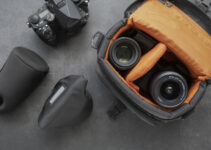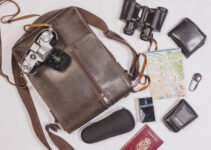Can you take a camera bag on a plane? For photographers and travelers, this question is crucial. Imagine capturing stunning vistas only to realize your camera bag might not meet airline regulations. So, can you take it with you?
The short answer is yes, you can. Most airlines allow camera bags as carry-on items, but size and weight restrictions apply. Knowing these guidelines ensures a smooth travel experience.
Curious about the specifics? We’ll delve into airline policies, expert tips, and essential packing strategies. Stay tuned to learn how to travel seamlessly with your precious gear.
Here, How to make a camera bag for dslr?How to make a camera bag for dslr?
Can you take a camera bag on a plane?
Does a camera bag count as a carry-on?
Yes, a camera bag typically counts as a carry-on item when flying. Airlines generally allow passengers to bring one carry-on bag and one personal item onboard, such as a purse, laptop bag, or camera bag.
However, it’s important to check with the specific airline you’re flying with, as their policies may vary slightly.
When considering whether your camera bag counts as a carry-on, here are a few points to keep in mind:
- Size Restrictions: Ensure your camera bag fits within the airline’s size limits for carry-on luggage. Most airlines provide dimensions for carry-on bags on their website.
- Weight Restrictions: Some airlines also have weight limits for carry-on bags. Make sure your camera bag, along with its contents, does not exceed this limit.
- Additional Personal Item: If you’re carrying a camera bag as your primary carry-on, you may still be allowed a separate personal item like a purse or laptop bag, depending on the airline’s policy.
By checking and adhering to the airline’s guidelines, you can ensure your camera bag is considered a carry-on item without any issues.
Here how to make a insulated camera bag?
How do you carry a camera bag on a plane?
Where should I pack my camera when flying?
When flying, it’s advisable to pack your camera in your carry-on luggage rather than checking it in with your checked baggage. Here’s why:
- Security: Carrying your camera in your carry-on allows you to keep it with you throughout the journey, reducing the risk of damage or theft during baggage handling.
- Fragile Equipment: Cameras and lenses are delicate and can be damaged if not handled carefully. Packing them in your carry-on bag ensures you can protect them with padding and keep them safe from rough handling.
- Immediate Access: Having your camera in your carry-on means you can quickly access it during the flight or at your destination without waiting for baggage claim.
- Lithium Batteries: Many airlines require devices with lithium batteries, such as cameras, to be carried in the cabin due to safety regulations.
By packing your camera in your carry-on luggage, you can ensure its safety, accessibility, and compliance with airline regulations.
Do cameras have to be taken out for TSA?
11 places to pac your camera gears when travelling on a plane
Related faq’s
Is it safe to take your camera on an airplane without a hard case or hardware bag, and just use a lightweight or compact travel-sized monopod or tripod instead?
Is camera allowed in hand baggage in flights?
Yes, cameras are generally allowed in hand baggage on flights.
Most airlines permit passengers to carry cameras and related equipment such as lenses, batteries, and memory cards in their carry-on luggage or personal item.
However, it’s essential to comply with airline regulations regarding the size, weight, and number of carry-on items allowed.
Additionally, be prepared for security screening, where you may need to remove your camera and other electronic devices from your bag for separate X-ray screening.
Always check with the specific airline for any additional guidelines or restrictions regarding carrying cameras on board.
Conclusion:
In conclusion, you can generally take a camera bag on a plane as part of your carry-on luggage or personal item.
However, it’s crucial to check the airline’s specific policies regarding size, weight, and any additional restrictions for electronic devices like cameras.
Packing your camera bag efficiently, ensuring its contents are well-protected, and being prepared for security screenings can help ensure a smooth and hassle-free experience when traveling with camera gear.
Always verify the guidelines with the airline before your trip to avoid any last-minute issues and enjoy capturing memories without worrying about your equipment.









